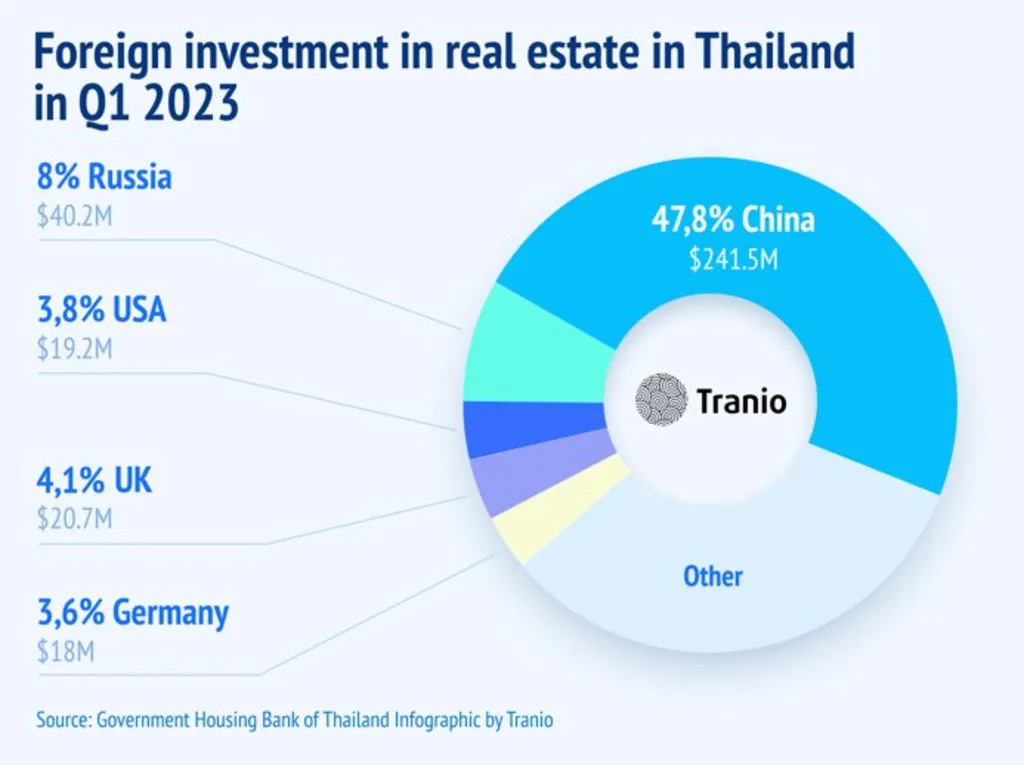Thailand is experiencing a powerful wave of growth. At the heart of this momentum is a record-breaking Thailand infrastructure investment surge, signaling a new era of economic transformation. In the first nine months of 2024 alone, foreign investment soared by 42% year-on-year, reaching 722.5 billion baht ($21.6 billion). The Board of Investment approved 2,195 projects, marking a 46% increase from the previous year.
This influx builds on the government’s decade-long commitment, having already injected nearly THB 4,000 billion (approx. $115 billion) into infrastructure projects. These projects are not only enhancing transportation and logistics but also fueling long-term GDP growth and positioning Thailand as a more competitive regional player.
The Economic Impact of Thailand Infrastructure Investment Surge
The impact of infrastructure spending is already evident. Major public works planned in 2022 alone were worth 1.4 trillion baht ($45.16 billion) and are expected to create 154,000 jobs. Each year, infrastructure development adds approximately 400 billion baht to GDP, contributing about 2.35% of Thailand’s total economic output.
The construction industry, a key driver of this growth, is forecast to expand by 4.6% in 2024, with sustained growth averaging 3.2% annually through 2033. This steady increase is supported by both public funding and robust private-sector participation.
Read Also: Thailand Infrastructure Investment and the Construction Landscape
Transformative Projects Like the EEC
One of Thailand’s most ambitious undertakings is the Eastern Economic Corridor (EEC). This mega-project alone accounts for over THB 600 billion in investment, including high-speed rail links, airport expansions, and new logistics hubs. The EEC is designed to turn the eastern provinces into a leading economic zone, boosting connectivity and drawing global investors.
Public-Private Partnerships (PPPs) are central to these achievements. Over the past 20 years, PPPs have delivered around USD 28 billion in infrastructure investments, helping the country bridge funding gaps and bring transformative projects to life faster and more efficiently.
Closing the Future Gap with Thailand Infrastructure Investment Surge
Despite these gains, challenges remain. If investment trends don’t accelerate, Thailand faces a potential USD 100 billion infrastructure spending gap by 2040. Addressing this shortfall will be critical to maintaining momentum and ensuring that infrastructure keeps pace with economic and population growth.

But the foundation is solid. With strong government backing, increasing foreign investment, and rising demand across sectors, Thailand is well-positioned to close the gap through continued innovation and collaboration.
Digital Infrastructure: The Next Frontier
While Thailand's physical infrastructure projects dominate headlines, the country is also making strategic investments in digital infrastructure to future-proof its economy. The government has allocated THB 15 billion ($480 million) for 5G network expansion and smart city development, with plans to install 350,000 new fiber-optic lines by 2025.
Read Also: Thailand Digital Construction Innovations Boost Growth
Key Developments:
- Bangkok’s "Smart City" initiative, featuring AI-powered traffic management and IoT-enabled utilities, aims to reduce urban congestion by 20% by 2026.
- 5G industrial parks in the EEC zone are attracting tech giants like Microsoft and Huawei, who are investing in cloud computing and automation hubs.
Thailand Infrastructure Investment Surge: A Future Built on Investment
The Thailand infrastructure investment surge is more than a short-term boost. It's a long-term strategy to elevate the country’s economic profile. With billions committed, thousands of jobs created, and key projects like the EEC leading the charge, the nation is actively shaping a more connected, competitive, and resilient future. As the construction industry expands and new opportunities emerge, infrastructure will remain a cornerstone of Thailand’s growth, with one investment at a time.







